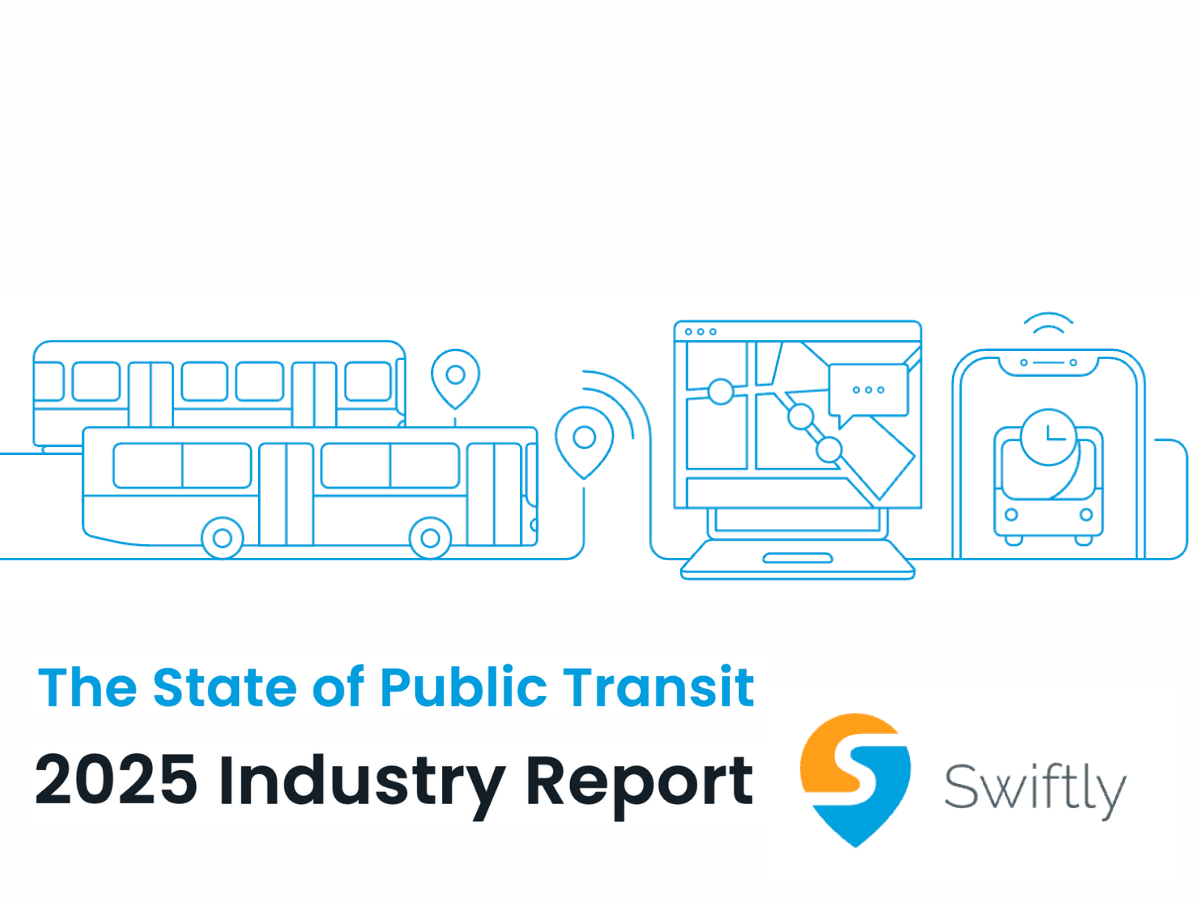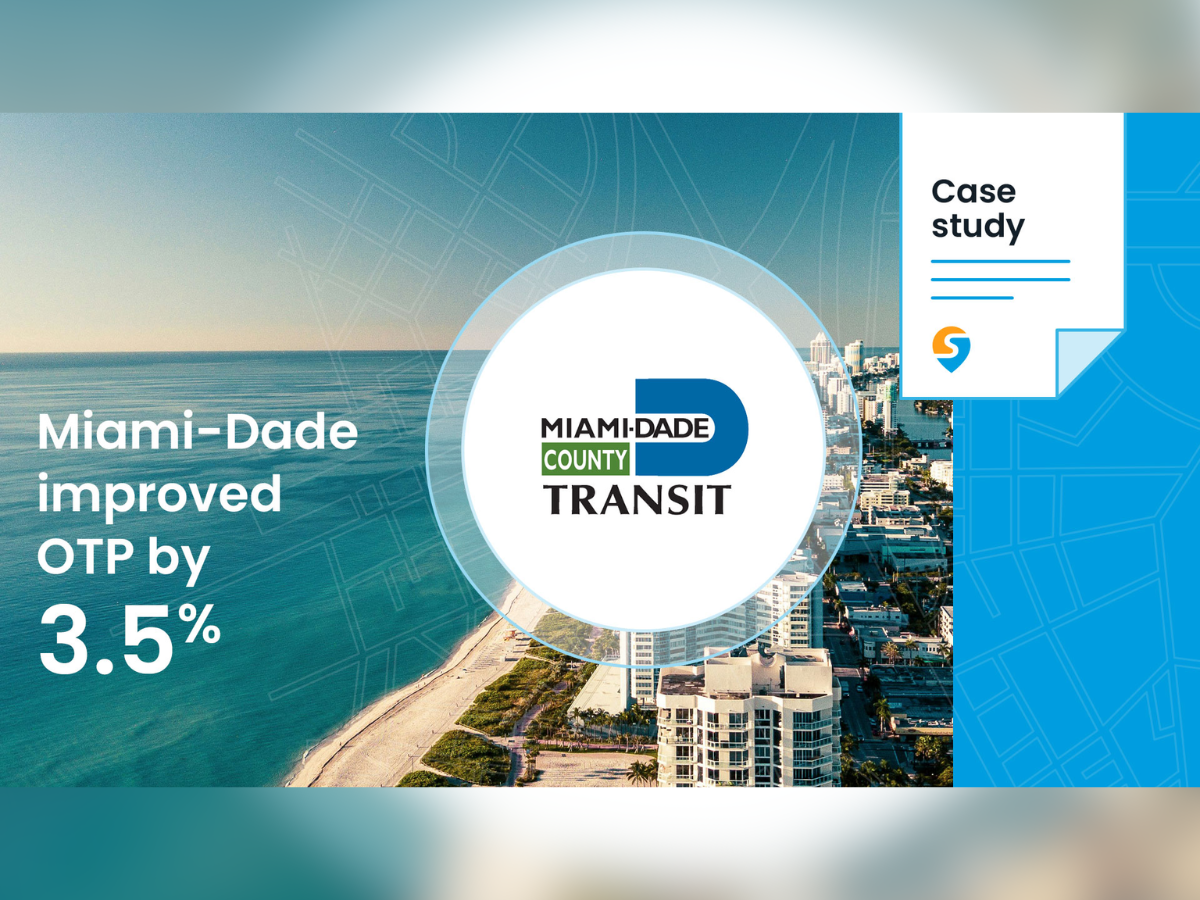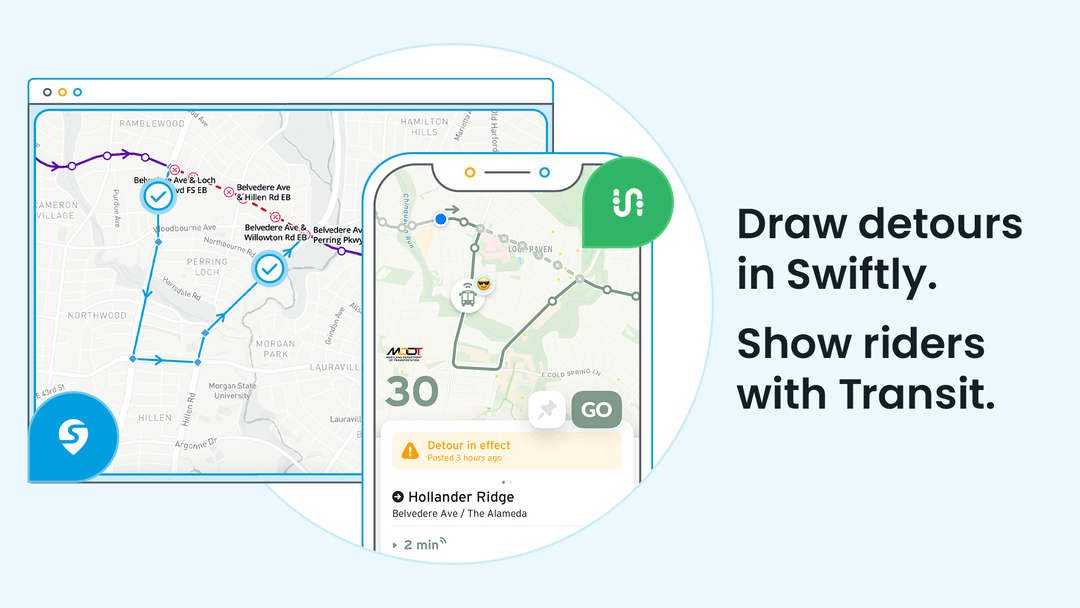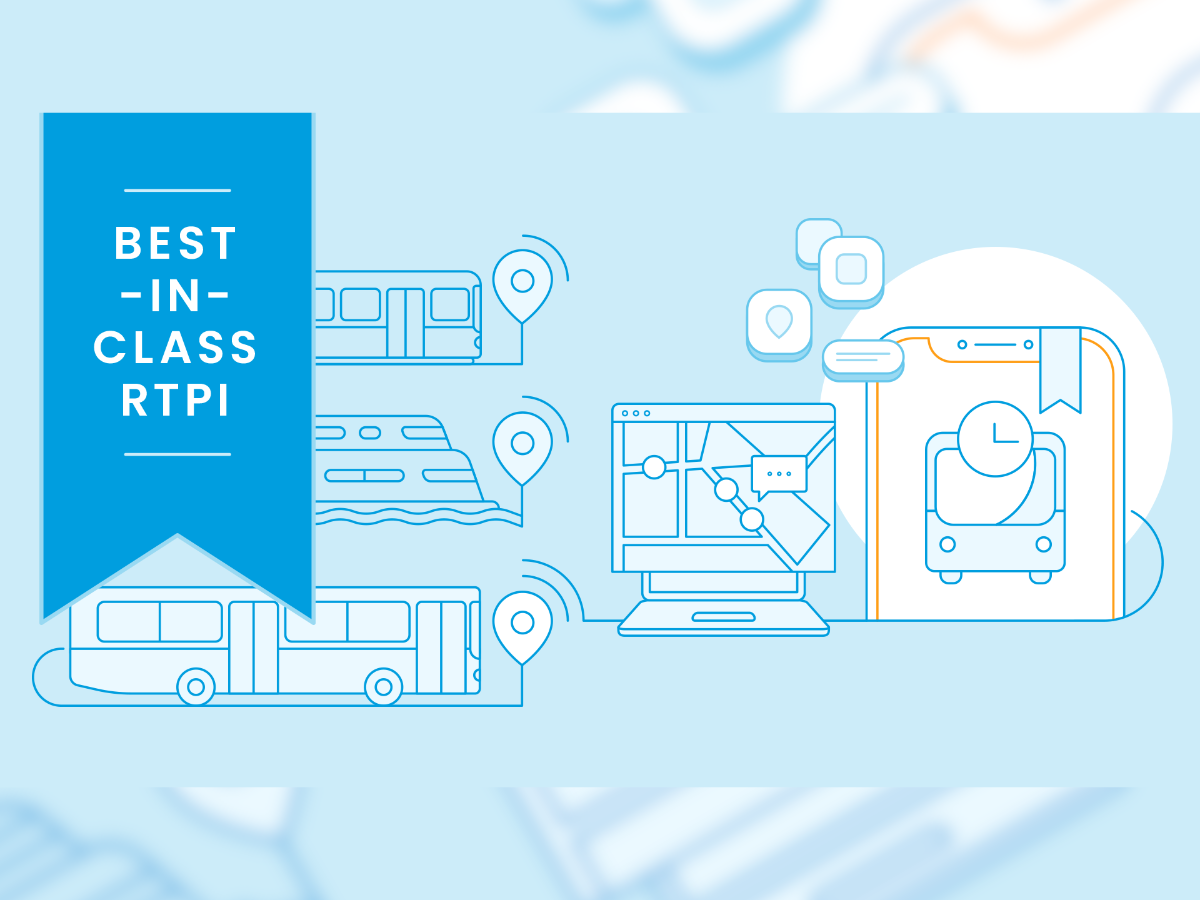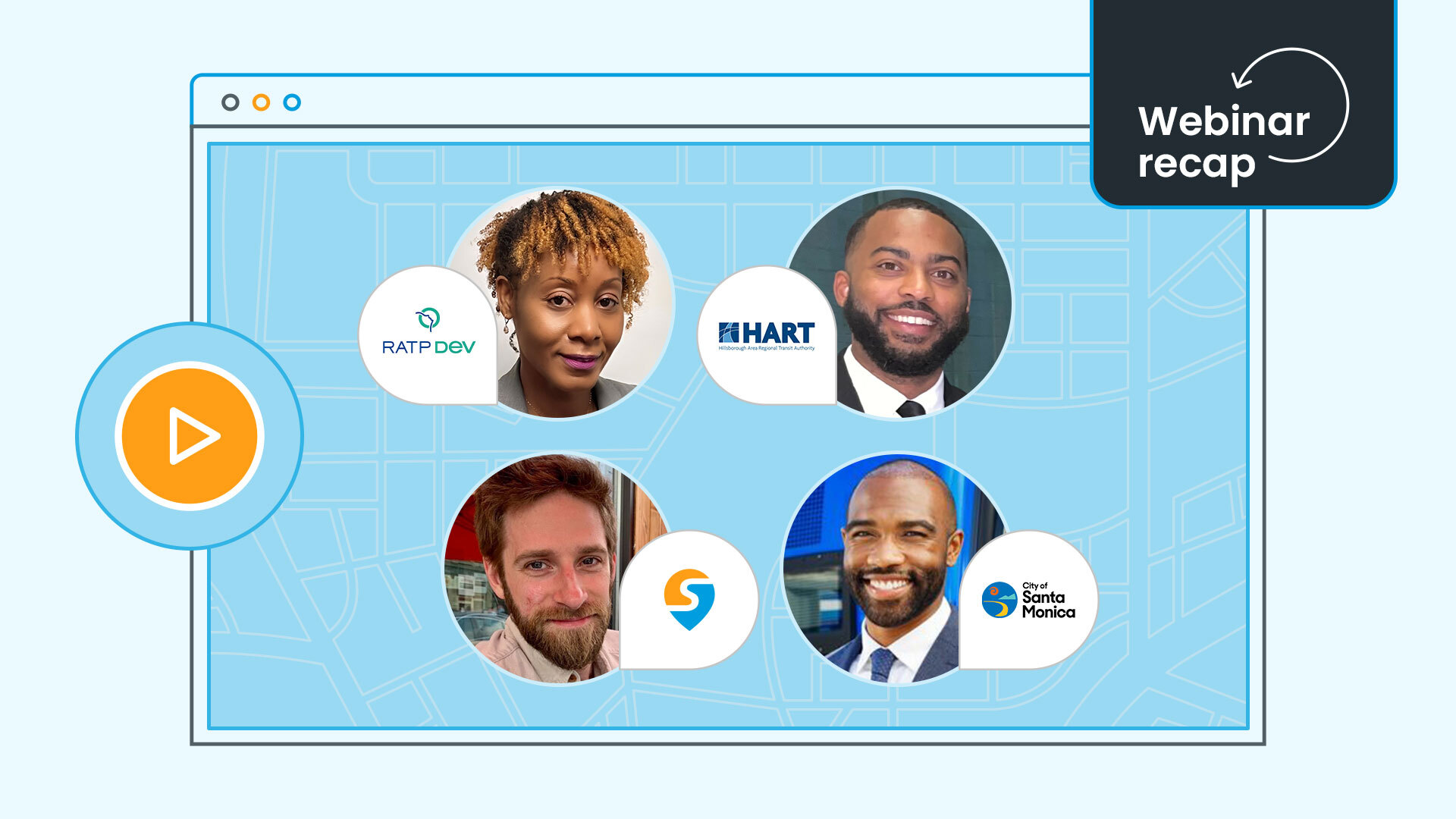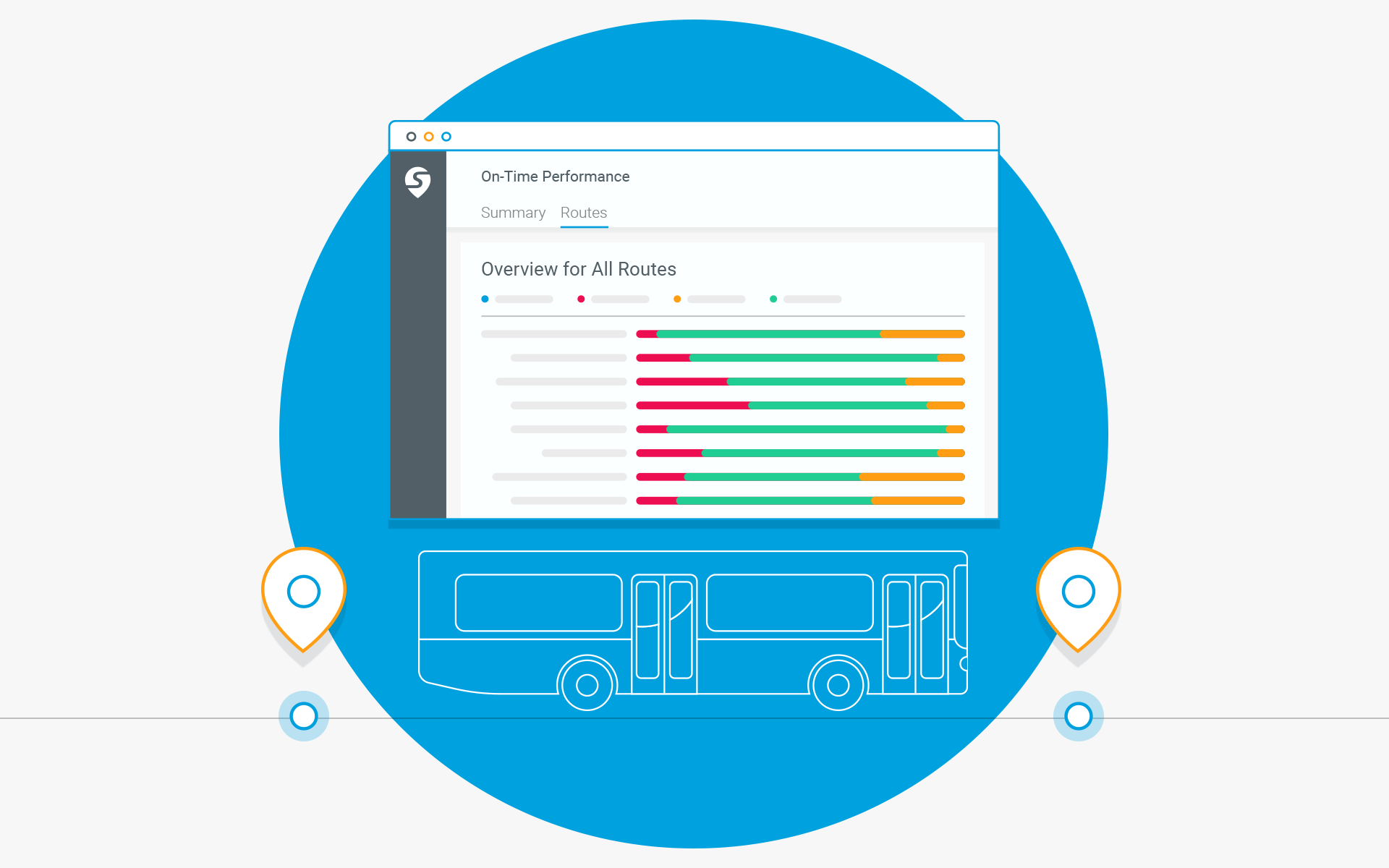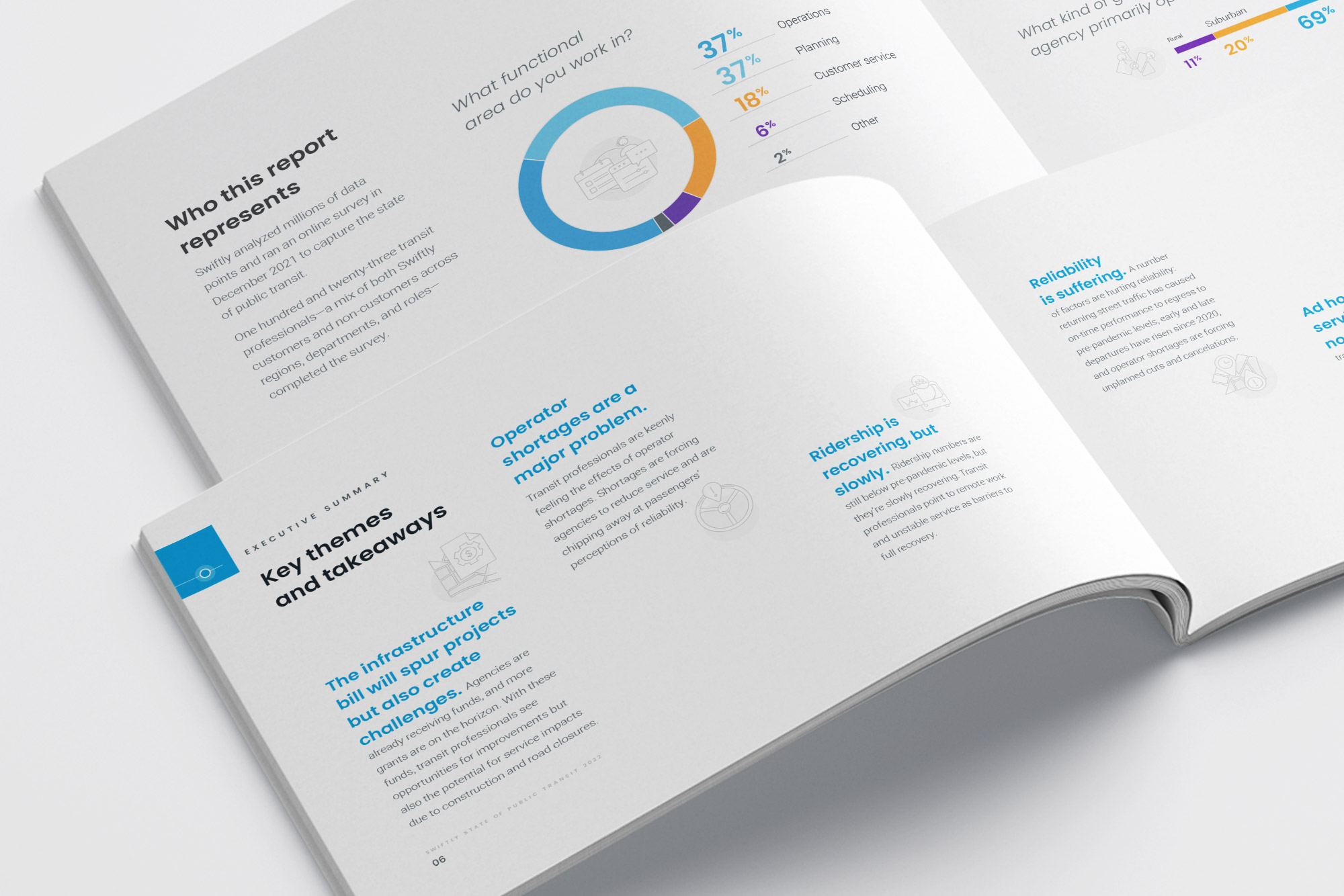Why Public Transit Needs a Connected Transit Platform
- By Jonny Simkin, CEO
Public Transit’s Future Is the Norm in Other Industries Today
Over the last 10 years, organizations have made enormous strides in meeting consumers’ needs for fast, convenient options in an increasingly connected world. Mobility solutions powered by modern, cloud-based technology such as rideshare and micromobility applications have raised the bar for consumer expectations. Riders now expect a streamlined digital experience with accurate and actionable information for every trip. The same is true in many workplaces, where employees expect to have access to user-friendly business applications to do their best work.
To date, public transit has largely been shut out of the benefits of modern, connected technology. The bulk of agencies today rely on hardware-laden, on-premise solutions.
In order to thrive in today’s connected world, transit agencies need access to the same modern tools that are already commonplace in other industries. Given the complexity of public transportation, transit agencies need a solution that connects all of their disparate functions – they need a Connected Transit Platform.
We’re hosting a webinar with transit agency leaders who have been on the forefront of championing this new technology. You can register to hear firsthand how agencies are benefitting from a Connected Transit Platform, and read on here for more on the solution.
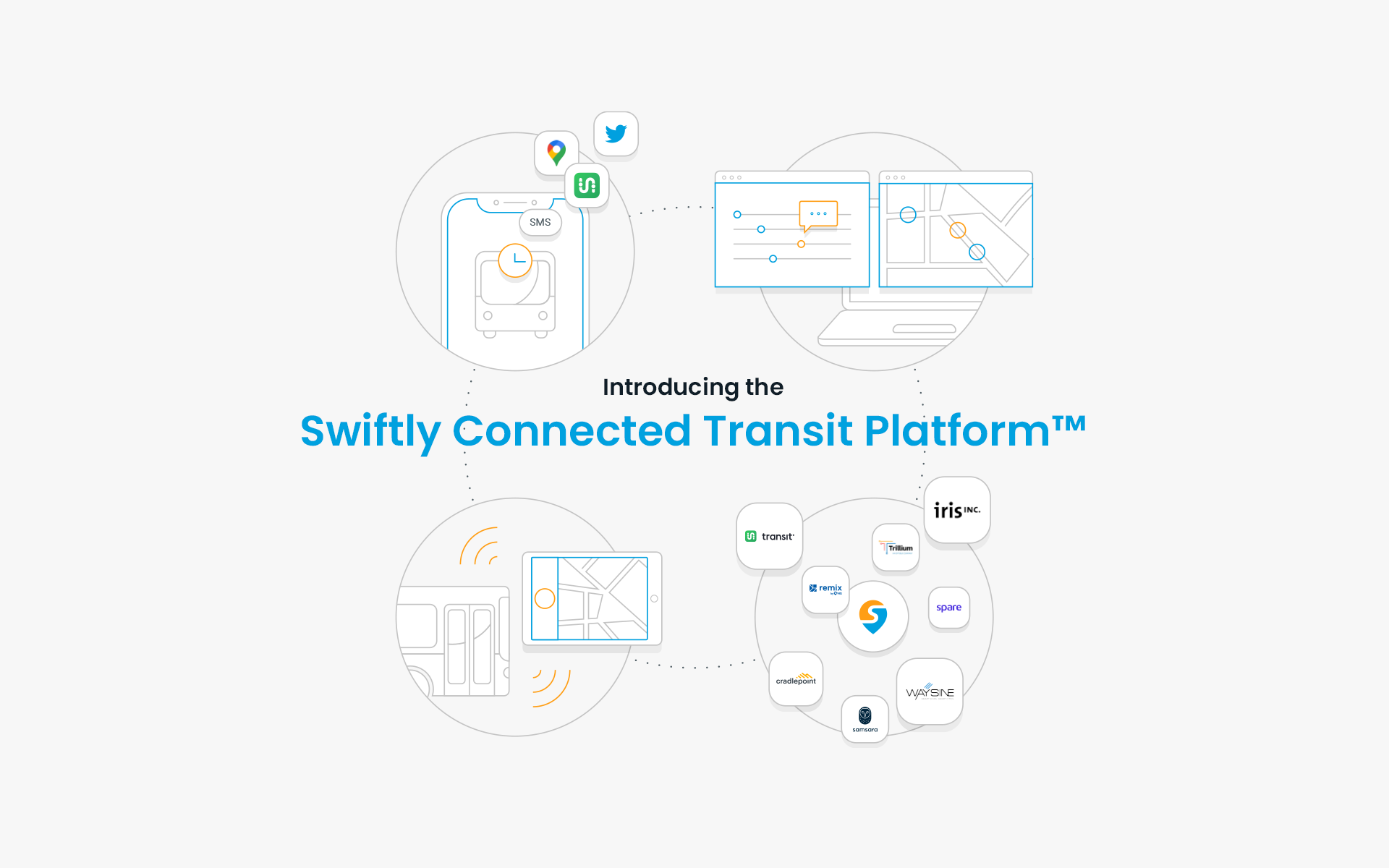
The Technology for Operating Public Transit Hasn’t Changed in Decades
Public transit has had to rely heavily on technology that was designed in the 1980s, 1990s, and early 2000s – before the cloud-based technology revolution began. As long as that’s true, transit agencies will struggle to meet rider and staff expectations in today’s connected world.
In particular, the closed nature of these systems presents major barriers for providing the kind of experience that modern riders have come to expect:
- It’s a barrier to communicating with passengers. Proprietary, siloed, and inaccurate data makes it difficult to send reliable information to rider-facing apps. When operations staff need to make changes to service, riders are often the last to know.
- It’s a barrier to communicating with staff. Because each system is hard to use and has its own data standard, it’s common for different departments to operate from a different picture of reality. For example, we often see agency operations teams using data from one system (CAD/AVL) while schedulers, planners, and other staff use data from another system (APC, etc.). The result is that they ultimately cannot work together in an aligned and efficient manner.
- It’s a barrier to connecting with vehicles. Agencies rely on hardware-centric systems with software that typically can only be updated manually, one vehicle at a time. Update processes are time-consuming and prone to failure, so more advanced agencies typically update their systems only a few times a year, and many agencies perform updates only every few years. This means vehicles are stuck with hardware that’s too expensive to upgrade and software that gets more outdated with every passing day.
- It’s a barrier to connecting with partners. There’s a vibrant ecosystem of modern, cloud-based transit software in the marketplace today, but most agencies are unable to participate in this ecosystem. The closed, proprietary nature of legacy transit software makes interoperability with these API-based systems impossible, effectively blocking agencies from using best-of-breed solutions.
Public transit is primed for driving more efficiency and better outcomes across these areas. In most cases, transit agencies haven’t had the ability to change the way they operate because there has been a lack of options for solutions that are built on modern technology systems.
What Modern Technology Means for Public Transit Agencies
Adopting cloud-based technology may seem daunting, but it presents the best opportunity for agencies to stay connected with their riders, staff, and vehicle fleets. The biggest innovations include:
- Software that can be updated over-the-air with no downtime;
- Interconnectivity with other applications through APIs and common data standards;
- Information and services that are accessible anywhere on nearly any device with an internet connection
The defining features of these developments – openness, ease of use, and interconnectivity – are the cornerstone of modern technology more broadly. These types of innovations are particularly well suited to building modern transportation solutions because they can be purpose-built to address the evolving expectations of passengers.
It’s Time for Public Transit to Have Access to Modern, Connected Technology
Transit agencies need access to modern, connected technology in order to operate effectively in today’s connected world. It’s the only way transit agencies can meet the evolving needs of passengers and adapt to the constant changes and challenges the industry is facing at large.
Public transit needs technology that is:
- Flexible. Transit needs access to modern, cloud-based software that is flexible and can be seamlessly updated to meet the rapidly changing needs of riders with no downtime. In addition, agencies need a cloud-powered onboard hardware ecosystem that enables in-vehicle hardware to be managed remotely, from any computer, any time, in a heavily secure environment. And transit data should be liberated to enable agencies to create any connections they want between disparate systems and vendors.
- Proactive vs. reactive. Transit needs predictive software that can spot developing issues and correct them before they impact riders. One of the benefits of real-time passenger information is that it can be used to keep riders informed of issues as they occur, but it would be even better if agencies had the tools to prevent those issues from occurring in the first place.
- Built for real-life outcomes. Transit needs products that have been demonstrated to actually deliver on key rider outcomes: improved service reliability, increased ridership, and fewer passenger complaints.
Swiftly, the First Connected Transit Platform, Gives Transit Agencies the Technology They Need to Operate in Today’s Connected World
Since day one, Swiftly’s mission has been to help cities move efficiently. That’s why we’ve been committed to building the industry’s first Connected Transit Platform – to give transit agencies the technology they need to operate in today’s connected world.
Swiftly’s Connected Transit Platform runs on the industry’s most accurate data for where a vehicle was, is, and will be next. We’ve continued to build upon this common data language to simplify day-to-day public transit operations connecting passengers, staff, vehicles, and partners. With Swiftly’s Connected Transit Platform, agencies can:
Connect with Passengers: Swiftly delivers real-time passenger predictions that are up to 50% more accurate than the industry standard. Share operational changes like trip cancellations, additions, stop closures, and detours with riders immediately when they happen. All real-time information is available in a data rich GTFS-rt feed that flows out to any passenger-facing endpoint.
Swiftly’s impact: Capital Metro Uses Swiftly to Help Improve the Customer Experience and Increase Ridership
Connect with Staff: Swiftly provides agency staff across departments with a common data language to manage real-time operations and improve future planning and scheduling. Historical performance and trends inform automated, customized recommendations for smarter decisions that ultimately improve the passenger experience.
Swiftly’s impact: Comfort Del Gro Australia Reduces Early Departures by 37% with Swiftly; WMATA Improves On-Time Performance by 6.2% Systemwide with Swiftly
Connect with Vehicles: Swiftly connects previously offline onboard hardware, such as APC sensors or AVAS, to the internet to enable smart devices that can be controlled remotely.This allows agencies to deploy seamless over-the-air updates without the need for additional hardware installation, system downtime, service interruptions, or manual upgrades.
Swiftly’s impact: RTA of Central Maryland Uses APC Connector to Get Ridership Data for 100% of Bus Trips
Connect with Partners: Rather than limit access to data, Swiftly standardizes and shares it. All of Swiftly’s rich transit data, such as real-time information, run-times, on-time performance, operator reports, and speed map information, are available through secure and authenticated data APIs. Agencies can connect and share their data with rider applications, consultants, planning and scheduling tools, and even third-party systems that control traffic signals for cloud-enabled transit signal priority (TSP). In every case, the entire transit ecosystem benefits from having access to the public transit industry’s most robust predictive engine and real-time data.
Swiftly’s impact: Remix and Swiftly Partner to Bring Better Transit Data to Cities
With access to Swiflty’s Connected Transit Platform, transit agencies now have an alternative to the legacy hardware-laden solutions they’re used to. They can embrace connected technology that has the passenger experience at heart and can adapt to the changing needs of a connected world.
This article was originally published by Swiftly.


